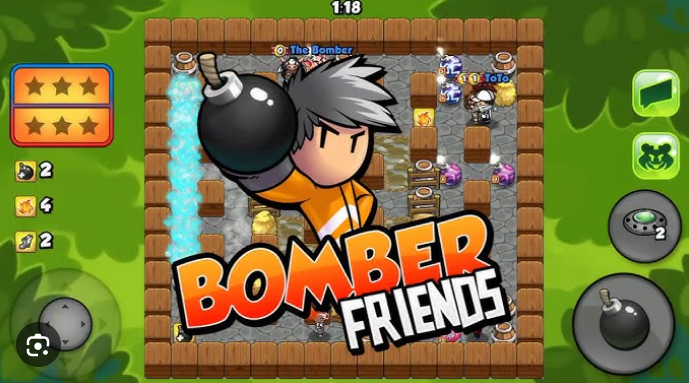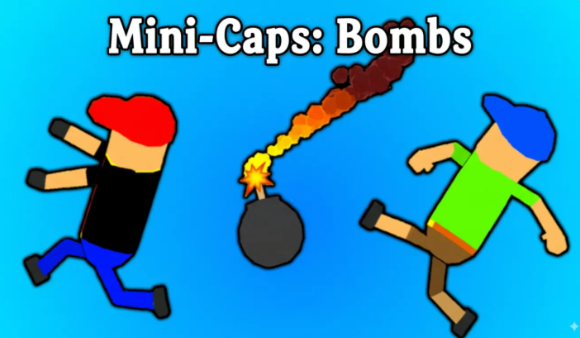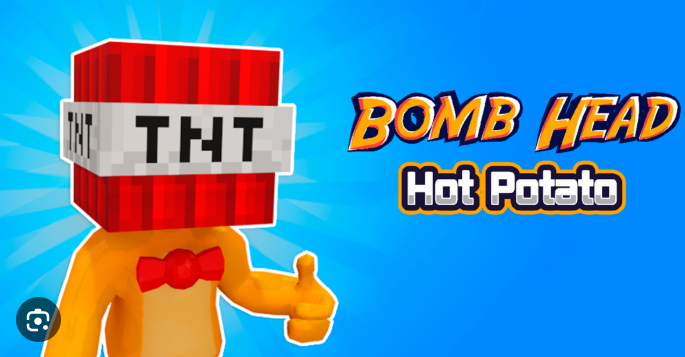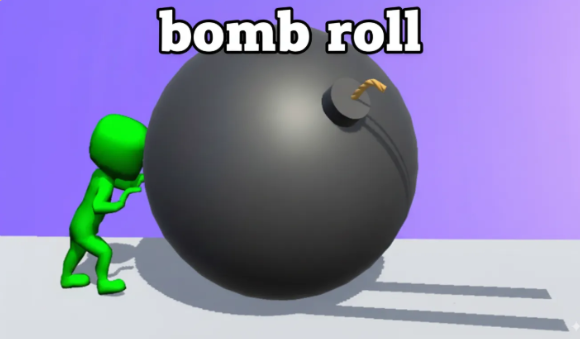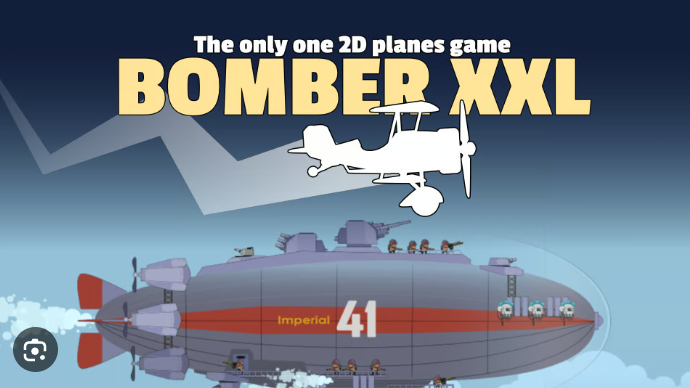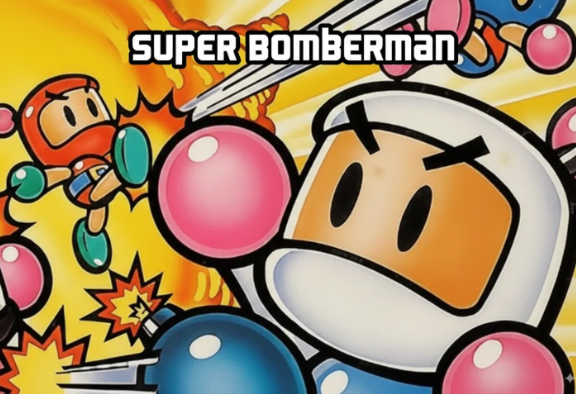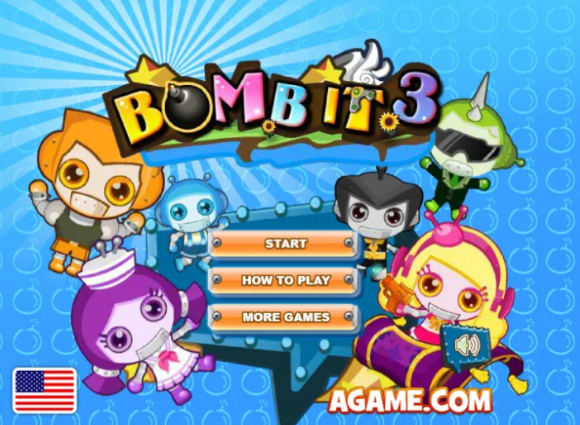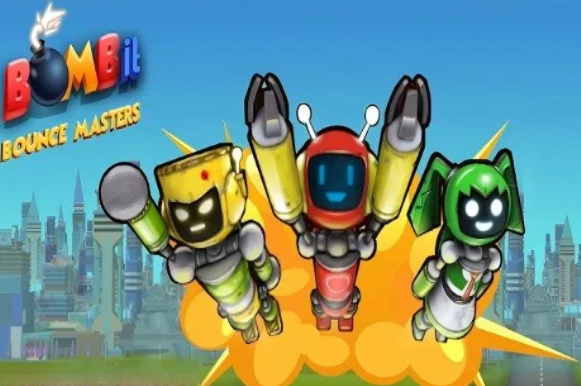Supreme Bomb Tag - Ultimate Strategy Guide to Dominate Every Round
Supreme Bomb Tag transforms the classic playground game of hot potato into an adrenaline-fueled strategic showdown where every second counts and one wrong move could seal your fate. This explosive variation combines heart-pounding physical activity with chess-like tactical thinking as players frantically pass a ticking bomb among themselves, desperately avoiding elimination when the timer hits zero. Unlike traditional tag games where you simply run and chase, Supreme Bomb Tag demands constant spatial awareness, lightning-fast decision-making, and the ability to read opponents' movements while managing your own energy reserves—creating an addictive gameplay loop that keeps everyone from elementary students to corporate teams coming back for more.

The Newest Bomb It Arenas
Whenever we add a fresh Bomb It release or revive a classic chapter, it appears here immediately so fans can jump right in.
Supreme Bomb Tag is a high-energy, strategic variation of traditional tag games where players frantically pass a designated “bomb” object among themselves, racing against time to avoid holding it when the timer runs out.
Think of it as musical chairs meets hot potato, but with way more running, strategy, and adrenaline. This isn’t your average recess game—Supreme Bomb Tag takes the classic concept and amplifies it with competitive rules, multiple rounds, and tactical gameplay that keeps everyone on their toes.
The game has exploded in popularity across schools, youth programs, and team-building events because it delivers something rare: a perfect balance of physical activity, mental strategy, and pure fun. Whether you’re a PE teacher searching for engaging activities, a parent planning a birthday party, or a team leader organizing group exercises, this game checks all the boxes.
Why Supreme Bomb Tag Stands Out:
- Inclusive gameplay - Players of varying athletic abilities can participate and contribute
- Minimal equipment needed - Just a soft object and a timer
- Scalable difficulty - Adjust rules for different age groups and skill levels
- Maximum engagement - No one sits on the sidelines waiting for their turn
What makes the “Supreme” version special is its layered complexity. Unlike basic tag, players must constantly assess risk, predict movements, and make split-second decisions about when to pass and who to target. The psychological element adds depth that keeps participants coming back for more.
What Is Supreme Bomb Tag?
Supreme Bomb Tag is a fast-paced game that takes classic tag to the next level. We love how it mixes strategy with pure adrenaline. Picture this: you’re running around with friends, and someone tosses you a “bomb”—but it’s not real, of course. You’ve got to pass it to someone else before time runs out. If you’re holding it when the buzzer sounds, you’re out or you lose points.
This game evolved from old-school playground fun that’s been around for decades. Kids have played tag variants across cultures for centuries, but Supreme Bomb Tag adds layers that make it way more exciting. We’re talking about multiple bombs flying around at once, special power-ups that give you advantages, and zones where you might be safe for a few seconds. It’s like the original game got a serious upgrade.
The “Supreme” part isn’t just marketing fluff. It means the rules are more complex and the gameplay demands real skill. You can’t just run in circles anymore. You need to think about where you’re going, who’s nearby, and when to make your move. Some versions include point systems that reward clever plays, not just survival. Others have elimination rounds that ramp up the tension as players drop out one by one.
What makes this game special is how it balances physical activity with mental gymnastics. Your heart’s pounding from sprinting, but your brain’s working overtime too. You’re constantly asking yourself: Should I target that slow runner? Is someone sneaking up behind me? Can I fake left and go right? These split-second choices separate winners from losers.
We’ve seen Supreme Bomb Tag pop up in schools, summer camps, and even corporate team-building events. It’s versatile enough for kids but challenging enough that adults get hooked too. The basic concept is simple—pass the bomb, don’t get caught—but mastering it takes practice and cunning.
Features Of Supreme Bomb Tag Game
Core Gameplay Elements
The timer mechanism is the heart of everything. Unlike regular tag where you’re “it” until you catch someone, here the clock controls your fate. Timers can be random or fixed, creating different types of pressure. Random timers keep everyone on edge because you never know when the bomb will “explode.” Fixed timers let you count down and plan your moves, but that last-second scramble gets intense.
Transfer rules matter more than you’d think. In most versions, you’ve got to physically tag another player to pass the bomb. No throwing allowed—that would be too easy. Some rule sets require a two-hand touch, while others accept a quick tap. The boundaries are crucial too. Without them, fast runners would just bolt to the next county. Play areas are marked clearly so everyone knows where they can and can’t go.
Strategic Depth
Here’s where Supreme Bomb Tag gets really interesting. You’re not just running around randomly. Smart players position themselves near slower targets or close to boundaries where people get trapped. We’ve learned that staying in the middle of the play area gives you options in all directions. Corners are death traps.
Predictive skills become your best weapon. Watch how other players move. Do they always run to the same spot? Do they panic under pressure? Use that info. If you know someone always goes left, you can cut them off. Risk assessment is constant—is it worth chasing that athletic player across the field, or should you go for an easier target nearby?
| Strategic Element | Why It Matters | Pro Tip |
|---|---|---|
| Spatial Awareness | Avoid getting cornered | Keep your head up, scan constantly |
| Target Selection | Maximize success rate | Go for closest player, not fastest |
| Energy Management | Last longer in game | Don’t sprint every second |
| Fake-Out Moves | Create openings | Change direction suddenly |
Physical and Mental Benefits
We can’t ignore how good this game is for your body and mind. Your heart rate shoots up within seconds of starting. It’s serious cardio that doesn’t feel like a workout because you’re having fun. Studies on tag-based activities show they improve cardiovascular fitness better than some structured exercises.
Reaction time gets sharper with every round. You’re making decisions in fractions of a second. That skill transfers to other areas—sports, driving, even video games. Social skills develop naturally too. You’re interacting with others, reading body language, and learning to handle both winning and losing gracefully.
Game Variations
The beauty of Supreme Bomb Tag is its flexibility. Team formats add a whole new dimension. Suddenly you’re protecting allies and coordinating attacks. We’ve played versions where teams can pass the bomb among themselves to set up the perfect strike on opponents.
Multi-bomb scenarios are chaos in the best way. Imagine two or three bombs in play at once. You might dodge one only to get tagged by another. Progressive difficulty modes decrease timer intervals as the game goes on, forcing faster decisions. Some versions integrate obstacles—cones, benches, or natural terrain—that you can use for cover or to block pursuers.
Safety Features
Good game design includes safety considerations. Adequate space prevents collisions that could cause injuries. We always check that the play area is free of hazards like rocks or holes. Clear boundary markers—cones, lines, or natural features—keep everyone in bounds without confusion.
Age-appropriate contact rules are essential. Younger kids might use gentle tags, while teens can handle more physical play. Supervision matters, especially with mixed age groups. Someone needs to watch for overly aggressive behavior or players who need a break. Hydration stations and scheduled rest periods prevent exhaustion and heat issues.
How to Play Supreme Bomb Tag Game?
Getting started with Supreme Bomb Tag is easier than you might think. We’ll walk you through the setup, basic rules, and strategies that’ll have you playing like a pro in no time.
Game Setup
First, you need a defined play area. For small groups (5-10 players), a space about 30 by 30 feet works well. Larger groups need more room—maybe 50 by 50 feet or bigger. Mark boundaries clearly using cones, chalk lines, or natural landmarks like trees or fences. Everyone must agree on what’s in bounds before starting.
Next, choose your “bomb.” This can be a soft ball, a bean bag, or any safe object that’s easy to grip and pass. Avoid anything hard or heavy that could cause injury. Some groups use a foam ball with a timer attached, but a simple ball works fine if someone keeps time separately.
Decide on your timer length. For beginners, we suggest 30-45 second intervals. This gives enough time to make plays without rounds dragging on. Advanced players might prefer 15-20 seconds for faster action. You can use a phone timer, a stopwatch, or even a random number generator app for unpredictable intervals.
Basic Rules and Objectives
The objective is simple: don’t be holding the bomb when time expires. Here’s how a typical round plays out:
- Starting Position: All players spread out in the play area
- Initial Holder: One player starts with the bomb (chosen randomly or by previous round’s loser)
- Timer Begins: As soon as the holder has the bomb, the countdown starts
- Passing Phase: The holder must chase and tag another player to transfer the bomb
- Detonation: When the timer goes off, whoever holds the bomb faces consequences
Transfer requirements vary by rule set, but most versions require:
- Physical contact (no throwing the bomb)
- Clear hand-off or tag
- Both players must be in bounds
- No immediate tag-backs (you can’t instantly pass it back to who gave it to you)
Scoring Systems
Different groups use different scoring methods. Here are the most common:
Elimination Style: If you’re holding the bomb at detonation, you’re out. Last player standing wins. This works great for shorter games with smaller groups.
Point-Based System: Each detonation gives the holder negative points (like -5 or -10). After a set number of rounds (usually 10-15), the player with the highest score wins. This keeps everyone in the game longer.
Team Format: Split into two teams. When the bomb detonates, the holder’s team loses a point. First team to lose 10 points loses the game. This encourages teamwork and strategy.
Advanced Strategies
Once you’ve got the basics down, these tactics will elevate your game:
The Herd Strategy: Stay near the largest group of players. When you get the bomb, you’ll have multiple targets close by. However, this also means you’re an easy target when you don’t have it.
Boundary Play: Position yourself near (but not against) boundaries. This limits approaches from one direction, making you harder to surprise. But be careful—you can also get trapped.
The Sprint-and-Stop: When chasing someone, sprint hard for 2-3 seconds, then stop suddenly. Many players will keep running, wasting energy. You conserve yours and can redirect to a closer target.
Fake Handoffs: Pretend you’re about to tag one player, then pivot to another. This works especially well when two players are close together. The fake creates confusion and openings.
Energy Conservation: Don’t sprint constantly. Jog or walk when you don’t have the bomb and aren’t being chased. Save your burst speed for critical moments. We’ve seen too many players gas out in the first few rounds.
Common Mistakes to Avoid
New players often make these errors:
- Running to corners: This traps you with no escape routes
- Watching the bomb holder only: You need to track all players to avoid being an easy target
- Panicking with the bomb: Take a breath, scan for the nearest player, and execute
- Ignoring the timer: Always have a rough sense of how much time is left
- Playing too defensively: If you never take risks, you’ll eventually get caught
Power-Ups and Variations
Some versions of Supreme Bomb Tag include power-ups that add extra fun:
- Shield: Protects you from receiving the bomb for 5 seconds
- Speed Boost: Temporary sprint increase
- Freeze: Immobilizes another player for 3 seconds
- Swap: Instantly trade positions with another player
These are usually represented by colored cones or markers placed around the play area. When you touch one, you activate its effect. This adds a layer of strategy—do you go for a power-up or focus on passing the bomb?
FAQs of Supreme Bomb Tag Game
How many players do you need for Supreme Bomb Tag?
You can play with as few as 4 players, but we find 8-15 is the sweet spot. With fewer than 4, there aren’t enough targets and the game gets repetitive. More than 20 players requires a huge play area and can get chaotic. For the best experience, aim for 10-12 players in a medium-sized space.
What happens if the bomb goes out of bounds?
Most rule sets say if the bomb carrier steps out of bounds while holding it, they automatically lose that round (as if the bomb detonated). If the bomb itself goes out—like if someone drops it—the last person who touched it is considered the holder. Some groups use a “neutral zone” rule where the bomb resets to the center if it goes out.
Can you play Supreme Bomb Tag indoors?
Absolutely! Indoor play works great in gyms or large rooms. Just make sure there’s enough space and no hazards like sharp corners or hard obstacles. We actually prefer indoor play during bad weather. The contained space makes the game more intense since there’s less room to run.
How long does a typical game last?
A single round lasts as long as your timer (usually 15-45 seconds). A full game might be 10-20 rounds, taking about 15-30 minutes total. This includes time between rounds for players to catch their breath and reset positions. Tournament-style games with elimination can last longer.
Is Supreme Bomb Tag safe for young children?
Yes, with proper modifications. For kids under 8, we recommend:
- Longer timer intervals (45-60 seconds)
- Smaller play area so they don’t get too spread out
- Gentle tag rules (one-hand touch only)
- Adult supervision at all times
- Frequent water breaks
Avoid elimination formats with young kids—they can feel left out. Stick with point-based systems where everyone keeps playing.
What if someone refuses to take the bomb when tagged?
This is poor sportsmanship and needs clear rules. Most groups use an “honor system” where players acknowledge when they’ve been tagged. If disputes happen often, assign a referee to watch transfers. In competitive settings, refusing a legitimate tag results in automatic loss of that round.
Can you block or dodge tags?
Standard rules say no blocking with your hands or arms. You can dodge by moving your body, but you can’t swat away someone’s tagging hand. This keeps the game fair and prevents injuries from aggressive blocking. Some advanced versions allow limited defensive moves, but beginners should stick to evasion only.
What’s the best surface to play on?
Grass is ideal—it’s soft for falls and provides good traction. Gym floors work well too. Avoid concrete or asphalt if possible, as falls can cause scrapes. Sand or dirt can work but might be too slippery. Whatever surface you choose, check for hazards like holes, rocks, or wet spots before playing.
How do you handle arguments during the game?
Set clear rules before starting and stick to them. If a dispute arises:
- Pause the game immediately
- Let both sides explain their view
- The referee or group majority decides
- Accept the decision and move on
We’ve found that most arguments come from unclear rules. Spend 5 minutes before the first round clarifying everything, and you’ll avoid 90% of conflicts.
Can you play Supreme Bomb Tag with uneven skill levels?
Yes! This is actually one of the game’s strengths. Faster, more athletic players don’t always win because strategy matters so much. We’ve seen clever positioning beat pure speed many times. To balance things further, you can:
- Give less athletic players a 2-second head start when they get the bomb
- Create “safe zones” that slower players can use once per round
- Use team formats where you mix skill levels
What equipment do you absolutely need?
The bare minimum is:
- A soft ball or object to serve as the bomb
- A timer (phone works fine)
- A defined play area (can be improvised with natural boundaries)
That’s it! You don’t need fancy gear. We’ve played great games with just a tennis ball and a phone timer in a backyard. Optional additions like cones for boundaries or colored markers for power-ups enhance the experience but aren’t required.
How do you keep the game exciting after many rounds?
Mix things up! Try these variations:
- Change timer intervals each round
- Add or remove boundaries to alter the play area
- Introduce new rules like “no running, only walking”
- Switch between elimination and point-based scoring
- Add obstacles in the play area
- Play in teams one round, individually the next
The key is variety. If players seem bored, change something. We never play more than 3-4 rounds with identical rules.
Similar Games
Final Words
Supreme Bomb Tag isn’t just another playground game—it’s a masterclass in combining physical intensity with strategic thinking. This electrifying twist on traditional tag forces players into constant motion while their minds race through tactical calculations: Who’s closest? How much time remains? Should I risk the long chase or take the safe target?
What sets this game apart is its universal appeal. Whether you’re organizing a school PE class, planning a corporate retreat, or simply looking for backyard entertainment, Supreme Bomb Tag delivers. The minimal equipment requirements—just a soft object and timer—mean you can launch a game almost anywhere. Yet beneath this simplicity lies remarkable depth: positioning strategies, energy management, predictive player tracking, and split-second decision-making that keeps participants mentally engaged while their hearts pound.
The game’s flexibility is its superpower. Adjust timer intervals for different age groups. Add power-ups for extra excitement. Switch between elimination and point-based formats to maintain freshness. Play individually or in teams. This adaptability ensures the game never grows stale, even after dozens of rounds.
Beyond the fun factor, you’re delivering genuine benefits: cardiovascular fitness that doesn’t feel like exercise, sharpened reaction times, enhanced spatial awareness, and natural social skill development. Players learn to handle pressure, read body language, and accept both victory and defeat gracefully.



